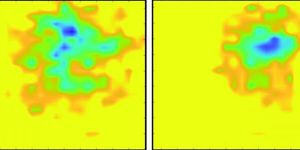A full charge in 5 minutes? Sign me up!
A breakthrough study published in Nature describes a novel technique that can be used to peek inside lithium-ion batteries in real time – providing a glimpse at the processes occurring inside of batteries that are currently hindering faster and more efficient charging. This technique has serious implications not only for our current battery technologies but also for next-generation batteries.
"A better battery is one that can store a lot more energy or one that can charge much faster -- ideally both," said co-author Dr. Christoph Schnedermann, of the University of Cambridge's Cavendish Laboratory. "But to make better batteries out of new materials, and to improve the batteries we're already using, we need to understand what's going on inside them."
Although lithium-ion batteries are touted for their high energy densities and long lifetimes, they are expensive to produce and lithium mining is extremely detrimental to the environment. Lithium-ion batteries are also prone to overheating and even exploding. Because of these drawbacks, they have yet to be widely introduced into electric cars or solar power energy storage. However, this new insight could provide the missing information to understand the ongoing processes inside lithium-ion batteries.
"To really study what's happening inside a battery, you essentially have to get the microscope to do two things at once: it needs to observe batteries charging and discharging over a period of several hours, but at the same time it needs to capture very fast processes happening inside the battery," said first author Alice Merryweather.
Although this is technically already possible using synchrotron X-ray or electron microscopy techniques, these technologies are time-consuming and expensive. In contrast, the newly developed technique, called interferometric scattering microscopy, is low-cost and lets the researchers look on as individual particles of lithium cobalt oxide (LCO) charge and discharge. They do this by measuring the amount of scattered light. Schnedermann elaborates:
"Given that lithium-ion batteries have been in use for decades, you'd think we know everything there is to know about them, but that's not the case. This technique lets us see just how fast it might be able to go through a charge-discharge cycle. What we're really looking forward to is using the technique to study next-generation battery materials -- we can use what we learned about LCO to develop new materials."
The team says that the technology could allow batteries like those in our smartphones and laptops to charge in as little as five minutes. "This lab-based technique we've developed offers a huge change in technology speed so that we can keep up with the fast-moving inner workings of a battery," said Schnedermann. "The fact that we can actually see these phase boundaries changing in real time was really surprising. This technique could be an important piece of the puzzle in the development of next-generation batteries."
Sources: Nature, Science Daily








